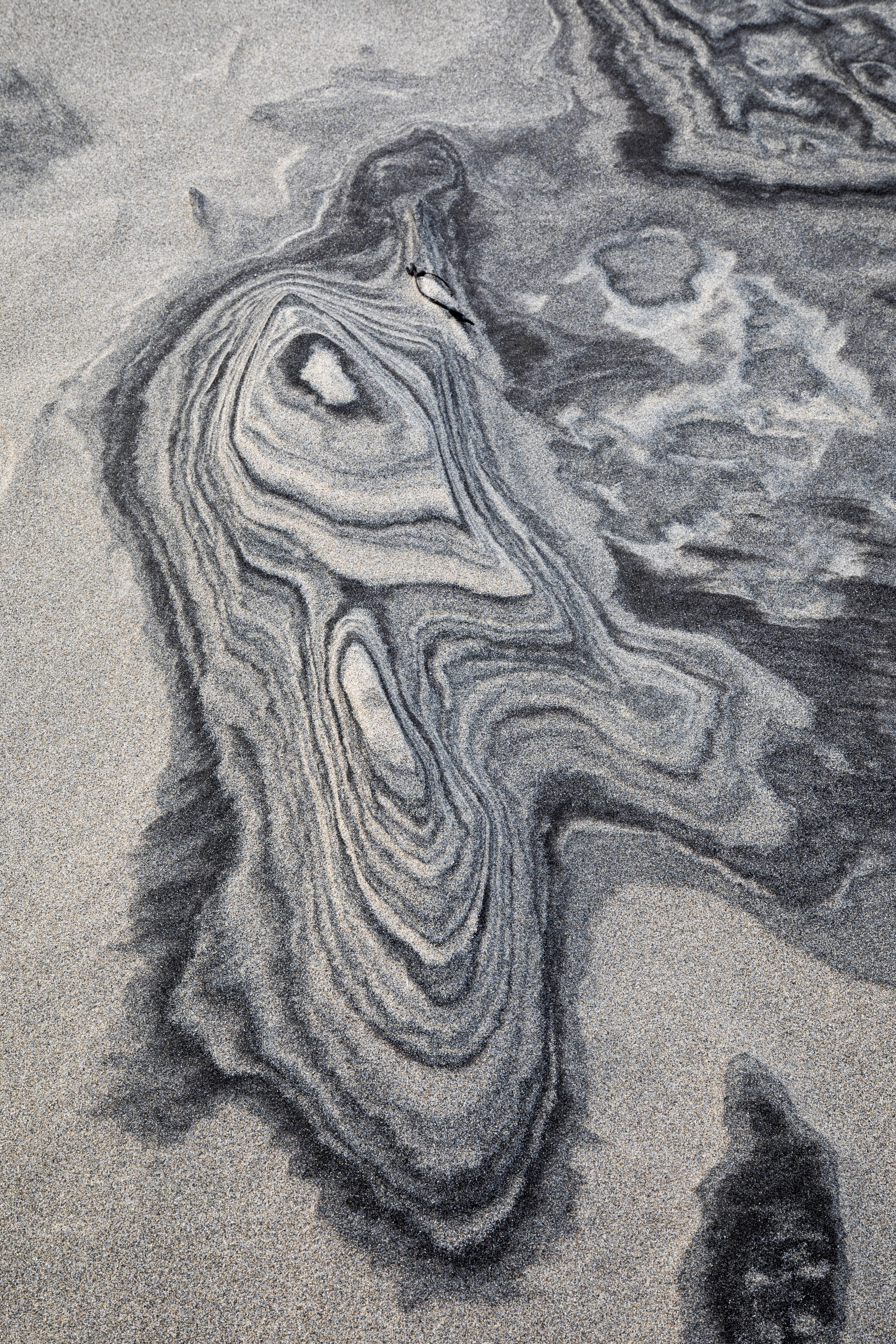nature’s creativity
All art is useless
~ Oscar Wilde
With every step I take, I trample on a work of art. That’s how it feels. The beaches of Lewis, one of the islands of the Scottish Outer Hebrides, create art. Every single day. The ebb and flow move the water like a painter’s brush across the sand. Only when the sea has completely receded does the palette of new sand structures become visible, but only for a short time until the tide smooths everything over again.
The question of what art is might have as many answers as there are forms of art. And these answers are deeply rooted in the Western worldview, based on an analytical, Newtonian approach rather than a more intuitive and holistic one, as found in the East. In Japan, the artist is not immediately seen as the creative force, the maker, but rather as a kind of medium. The highest valued art arises when the artist, through meditation, manages to shut off consciousness and thought, and through satori (a spontaneous, enlightened, epiphanic moment), the artwork seems to create itself.
According to all conventional views, the creation of art is reserved for humans, as it is a conscious creative process in which the artist makes various choices. Thus, a tree trunk of a fallen tree in the forest is not art, but that same tree trunk as an installation in a museum is. The sand structures on Lewis, shaped by the play of water, wind, and sand, are not art, but when an artist produces something similar with the same natural materials, in the same place, and with the same temporality, then it is considered art. The viewer sees the tree as art because of the space it occupies (the museum) and the intention of the artist (whatever that may be, and whether the viewer knows it or not). The tree itself as an object has not changed. The tree becomes art through the added intention of the artist.
Then art is everything that I name as such, and if everything is art, nothing is.
Zen art arises without effort, without purpose, and without a conscious creative process; it is artless art. Zen art comes into being in the here and now, spontaneously, Mushin, unfocused on anything. And with a bit of intellectual flexibility, you could see the sand structures as spontaneous, naturally formed artworks. I will tread more carefully around them.
I slowly turn 360 degrees. From the pregnant clouds above the sea to the gray mountains in the distance, and through the golden dunes with plumes of grass waving in the strong wind, back to the white foam on the waves. In such a setting, in the middle of nowhere, it’s not hard to feel one with nature. But what does it mean to feel one with nature? In the non-dualistic worldview of Zen, there is no distinction between me and nature; there is only nature. I am nature, and nature is me. The idea that I, as a sort of spectator, look at the world is a delusion, an illusion. There is no observer and the observed, no subject and object. There is just what there is, and that’s it.
The 13th-century Christian mystic and philosopher Meister Eckhart wrote: “The eyes with which I see God are the same eyes with which God sees me.” I translate this as: “The eyes with which I look at the landscape are the same eyes with which the landscape sees me.” The relationship the photographer has with the landscape is intimate and non-dualistic. Meister Eckhart: “One seeing, one knowing, one love.”
If the photographer is one with what he photographs, then every photo is a selfie.
Leap into the boundless
and make it your home
- Lao Tzu

